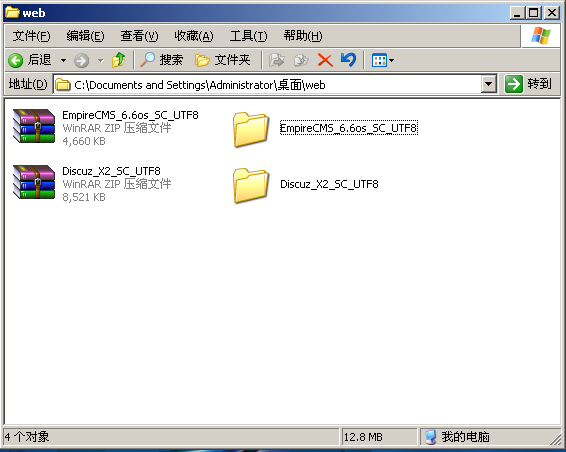你还在担心rpc接口超时吗
在使用dubbo时,通常会遇到timeout这个属性,timeout属性的作用是:给某个服务调用设置超时时间,如果服务在设置的时间内未返回结果,则会抛出调用超时异常:TimeoutException,在使用的过程中,我们有时会对provider和consumer两个配置都会设置timeout值,那么服务调用过程中会以哪个为准?橘子同学今天主要针对这个问题进行分析和扩展。
三种设置方式
以provider配置为例:
#### 方法级别 <dubbo:service interface="orangecsong.test.service.TestService" ref="testServiceImpl"> <dubbo:method name="test" timeout="10000"/> </dubbo:service>
#### 接口级别 <dubbo:service interface="orangecsong.test.service.TestService" ref="testServiceImpl" timeout="10000"/>
#### 全局级别 <dubbo:service ="10000"/>
优先级选择
在dubbo中如果provider和consumer都配置了相同的一个属性,比如本文分析的timeout,其实它们是有优先级的,consumer方法配置 > provider方法配置 > consumer接口配置 > provider接口配置 > consumer全局配置 > provider全局配置。所以对于小橘开始的提出的问题就有了结果,会以消费者配置的为准,接下结合源码来进行解析,其实源码很简单,在RegistryDirectory类中将服务列表转换为DubboInvlker方法中进行了处理:
private Map<String, Invoker<T>> toInvokers(List<URL> urls) {
Map<String, Invoker<T>> newUrlInvokerMap = new HashMap<String, Invoker<T>>();
if (urls == null || urls.isEmpty()) {
return newUrlInvokerMap;
}
Set<String> keys = new HashSet<String>();
String queryProtocols = this.queryMap.get(Constants.PROTOCOL_KEY);
for (URL providerUrl : urls) {
// If protocol is configured at the reference side, only the matching protocol is selected
if (queryProtocols != null && queryProtocols.length() > 0) {
boolean accept = false;
String[] acceptProtocols = queryProtocols.split(",");
for (String acceptProtocol : acceptProtocols) {
if (providerUrl.getProtocol().equals(acceptProtocol)) {
accept = true;
break;
}
}
if (!accept) {
continue;
}
}
if (Constants.EMPTY_PROTOCOL.equals(providerUrl.getProtocol())) {
continue;
}
if (!ExtensionLoader.getExtensionLoader(Protocol.class).hasExtension(providerUrl.getProtocol())) {
logger.error(new IllegalStateException("Unsupported protocol " + providerUrl.getProtocol() +
" in notified url: " + providerUrl + " from registry " + getUrl().getAddress() +
" to consumer " + NetUtils.getLocalHost() + ", supported protocol: " +
ExtensionLoader.getExtensionLoader(Protocol.class).getSupportedExtensions()));
continue;
}
// 重点就是下面这个方法
URL url = mergeUrl(providerUrl);
String key = url.toFullString(); // The parameter urls are sorted
if (keys.contains(key)) { // Repeated url
continue;
}
keys.add(key);
// Cache key is url that does not merge with consumer side parameters, regardless of how the consumer combines parameters, if the server url changes, then refer again
Map<String, Invoker<T>> localUrlInvokerMap = this.urlInvokerMap; // local reference
Invoker<T> invoker = localUrlInvokerMap == null ? null : localUrlInvokerMap.get(key);
if (invoker == null) { // Not in the cache, refer again
try {
boolean enabled = true;
if (url.hasParameter(Constants.DISABLED_KEY)) {
enabled = !url.getParameter(Constants.DISABLED_KEY, false);
} else {
enabled = url.getParameter(Constants.ENABLED_KEY, true);
}
if (enabled) {
invoker = new InvokerDelegate<T>(protocol.refer(serviceType, url), url, providerUrl);
}
} catch (Throwable t) {
logger.error("Failed to refer invoker for interface:" + serviceType + ",url:(" + url + ")" + t.getMessage(), t);
}
if (invoker != null) { // Put new invoker in cache
newUrlInvokerMap.put(key, invoker);
}
} else {
newUrlInvokerMap.put(key, invoker);
}
}
keys.clear();
return newUrlInvokerMap;
}
重点就是上面mergeUrl方法,将provider和comsumer的url参数进行了整合,在mergeUrl方法有会调用ClusterUtils.mergeUrl方法进行整合,因为这个方法比较简单,就是对一些参数进行了整合了,会用consumer参数进行覆盖,这里就不分析了,如果感兴趣的同学可以去研究一下。
超时处理
在配置设置了超时timeout,那么代码中是如何处理的,这里咱们在进行一下扩展,分析一下dubbo中是如何处理超时的,在调用服务方法,最后都会调用DubboInvoker.doInvoke方法,咱们就从这个方法开始分析:
@Override
protected Result doInvoke(final Invocation invocation) throws Throwable {
RpcInvocation inv = (RpcInvocation) invocation;
final String methodName = RpcUtils.getMethodName(invocation);
inv.setAttachment(Constants.PATH_KEY, getUrl().getPath());
inv.setAttachment(Constants.VERSION_KEY, version);
ExchangeClient currentClient;
if (clients.length == 1) {
currentClient = clients[0];
} else {
currentClient = clients[index.getAndIncrement() % clients.length];
}
try {
boolean isAsync = RpcUtils.isAsync(getUrl(), invocation);
boolean isAsyncFuture = RpcUtils.isReturnTypeFuture(inv);
boolean isOneway = RpcUtils.isOneway(getUrl(), invocation);
int timeout = getUrl().getMethodParameter(methodName, Constants.TIMEOUT_KEY, Constants.DEFAULT_TIMEOUT);
if (isOneway) {
boolean isSent = getUrl().getMethodParameter(methodName, Constants.SENT_KEY, false);
currentClient.send(inv, isSent);
RpcContext.getContext().setFuture(null);
return new RpcResult();
} else if (isAsync) {
ResponseFuture future = currentClient.request(inv, timeout);
// For compatibility
FutureAdapter<Object> futureAdapter = new FutureAdapter<>(future);
RpcContext.getContext().setFuture(futureAdapter);
Result result;
// 异步处理
if (isAsyncFuture) {
// register resultCallback, sometimes we need the async result being processed by the filter chain.
result = new AsyncRpcResult(futureAdapter, futureAdapter.getResultFuture(), false);
} else {
result = new SimpleAsyncRpcResult(futureAdapter, futureAdapter.getResultFuture(), false);
}
return result;
} else {
// 同步处理
RpcContext.getContext().setFuture(null);
return (Result) currentClient.request(inv, timeout).get();
}
} catch (TimeoutException e) {
throw new RpcException(RpcException.TIMEOUT_EXCEPTION, "Invoke remote method timeout. method: " + invocation.getMethodName() + ", provider: " + getUrl() + ", cause: " + e.getMessage(), e);
} catch (RemotingException e) {
throw new RpcException(RpcException.NETWORK_EXCEPTION, "Failed to invoke remote method: " + invocation.getMethodName() + ", provider: " + getUrl() + ", cause: " + e.getMessage(), e);
}
}
在这个方法中,就以同步模式进行分析,看request方法,request()方法会返回一个DefaultFuture类,在去调用DefaultFuture.get()方法,这里其实涉及到一个在异步中实现同步的技巧,咱们这里不做分析,所以重点就在get()方法里:
@Override
public Object get() throws RemotingException {
return get(timeout);
}
@Override
public Object get(int timeout) throws RemotingException {
if (timeout <= 0) {
timeout = Constants.DEFAULT_TIMEOUT;
}
if (!isDone()) {
long start = System.currentTimeMillis();
lock.lock();
try {
while (!isDone()) {
done.await(timeout, TimeUnit.MILLISECONDS);
if (isDone() || System.currentTimeMillis() - start > timeout) {
break;
}
}
} catch (InterruptedException e) {
throw new RuntimeException(e);
} finally {
lock.unlock();
}
if (!isDone()) {
throw new TimeoutException(sent > 0, channel, getTimeoutMessage(false));
}
}
return returnFromResponse();
}
在调用get()方法时,会去调用get(timeout)这个方法,在这个方法中会传一个timeout字段,在和timeout就是咱们配置的那个参数,在这个方法中咱们要关注下面一个代码块:
if (!isDone()) {
long start = System.currentTimeMillis();
lock.lock();
try {
while (!isDone()) {
// 线程阻塞
done.await(timeout, TimeUnit.MILLISECONDS);
if (isDone() || System.currentTimeMillis() - start > timeout) {
break;
}
}
} catch (InterruptedException e) {
throw new RuntimeException(e);
} finally {
lock.unlock();
}
// 在超时时间里,还没有结果,则抛出超时异常
if (!isDone()) {
throw new TimeoutException(sent > 0, channel, getTimeoutMessage(false));
}
}
重点看await()方法,会进行阻塞timeout时间,如果阻塞时间到了,则会唤醒往下执行,超时跳出while循环中,判断是否有结果返回,如果没有(这个地方要注意:只有有结果返回,或超时才跳出循环中),则抛出超时异常。讲到这里,超时原理基本上其实差不多了,DefaultFuture这个类还有个地方需要注意,在初始化DefaultFuture对象时,会去创建一个超时的延迟任务,延迟时间就是timeout值,在这个延迟任务中也会调用signal()方法唤醒阻塞。
分批调用
不过在调用rpc远程接口,如果对方的接口不能一次承载返回请求结果能力,我们一般做法是分批调用,将调用一次分成调用多次,然后对每次结果进行汇聚,当然也可以做用利用多线程的能力去执行。后面文章小橘将会介绍这种模式,敬请关注哦!
/**
* Description:通用 分批调用工具类
* 场景:
* <pre>
* 比如List参数的size可能为 几十个甚至上百个
* 如果invoke接口比较慢,传入50个以上会超时,那么可以每次传入20个,分批执行。
* </pre>
* Author: OrangeCsong
*/
public class ParallelInvokeUtil {
private ParallelInvokeUtil() {}
/**
* @param sourceList 源数据
* @param size 分批大小
* @param buildParam 构建函数
* @param processFunction 处理函数
* @param <R> 返回值
* @param <T> 入参/
* @param <P> 构建参数
* @return
*/
public static <R, T, P> List<R> partitionInvokeWithRes(List<T> sourceList, Integer size,
Function<List<T>, P> buildParam,
Function<P, List<R>> processFunction) {
if (CollectionUtils.isEmpty(sourceList)) {
return new ArrayList<>(0);
}
Preconditions.checkArgument(size > 0, "size大小必须大于0");
return Lists.partition(sourceList, size).stream()
.map(buildParam)
.map(processFunction)
.filter(Objects::nonNull)
.reduce(new ArrayList<>(),
(resultList1, resultList2) -> {
resultList1.addAll(resultList2);
return resultList1;
});
}
}
本文由博客群发一文多发等运营工具平台 OpenWrite 发布
- 本文标签: dubbo 博客 ip UI id URLs build Service description 代码 stream final http remote 配置 Collection Select 同步 message tar 多线程 equals 参数 ECS 源码 IO map 解析 consumer 文章 IDE ArrayList list 运营 cache cat CTO provider ACE https 数据 HashMap key client constant 线程 时间 HashSet
- 版权声明: 本文为互联网转载文章,出处已在文章中说明(部分除外)。如果侵权,请联系本站长删除,谢谢。
- 本文海报: 生成海报一 生成海报二












![[HBLOG]公众号](https://www.liuhaihua.cn/img/qrcode_gzh.jpg)

